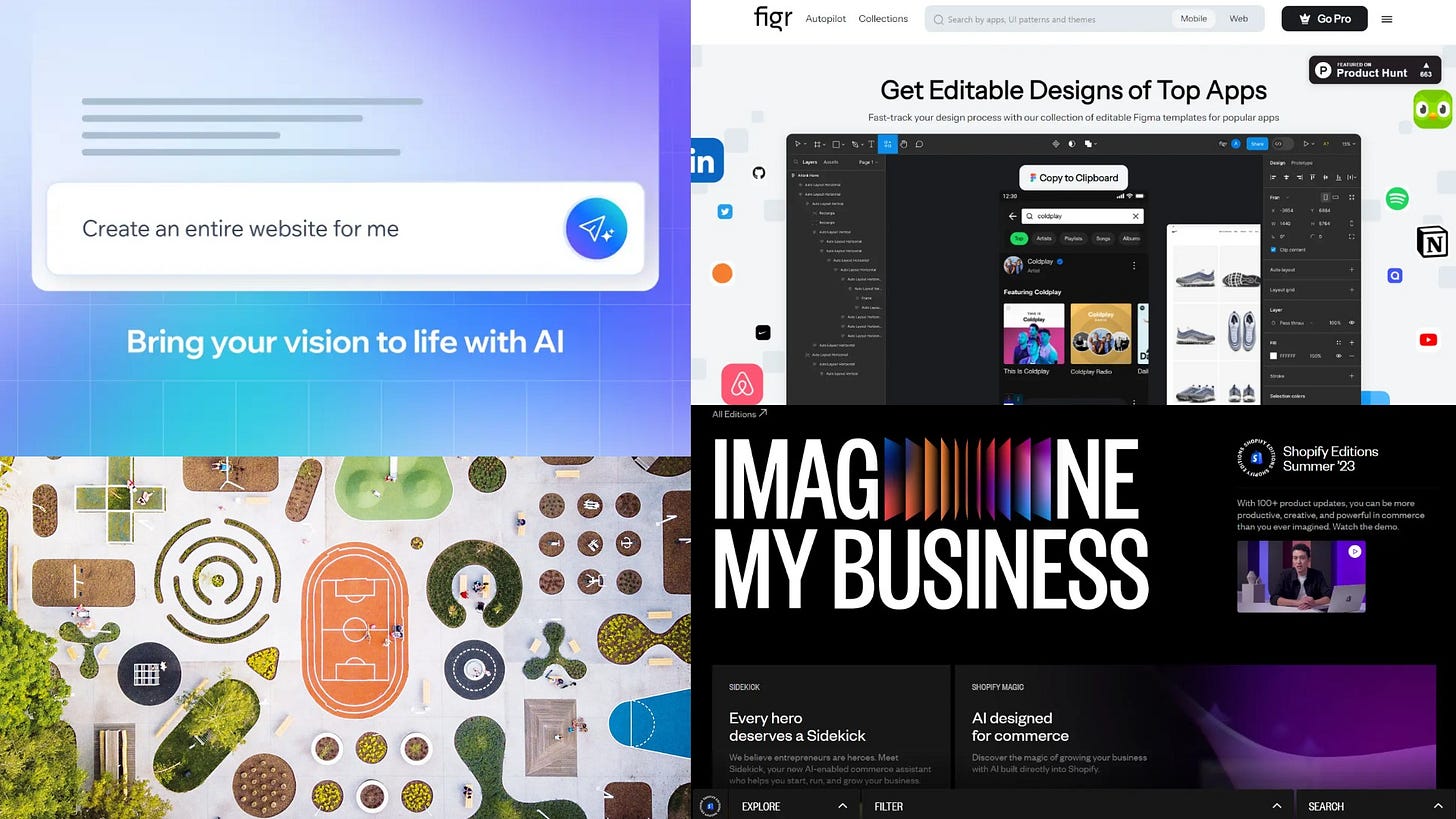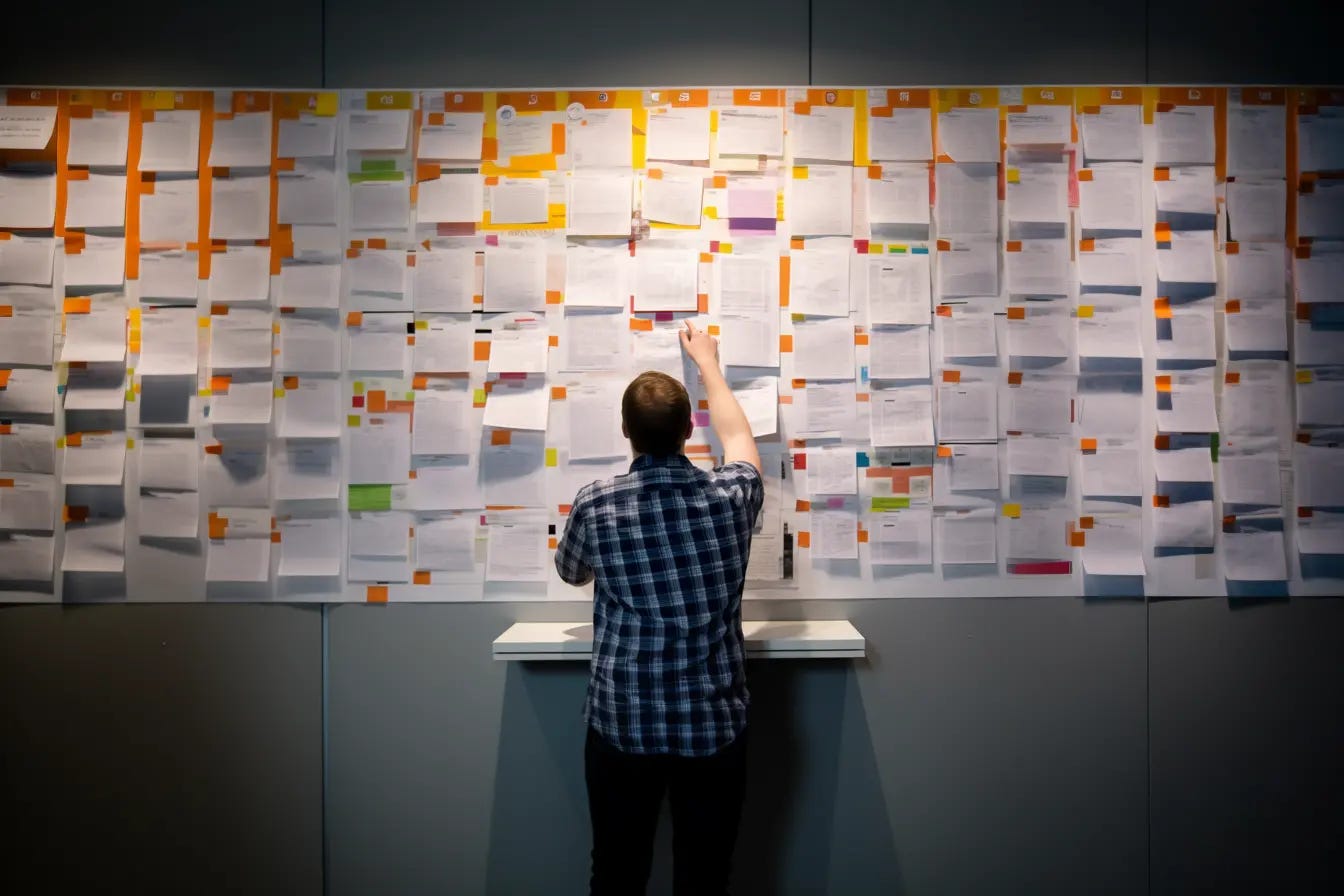Issue 61
Dopamine based user driven UI when rethinking windows management
Hello, dear readers! 👋
In this issue, among other things:
How to simplify the study of complex interfaces
A new concept of windows organization in the OS
How to use color when visualizing data
Gallery with free UI whales, icons, illustrations, mockups and other materials
Curated selection with editable layouts of websites and applications
Why competitive analysis can become problematic for companies
Cool YouTube channel with Blender lessons
AI that generates music by Meta
AI that generates video
Quotes from "Meet Your Happy Chemicals: Dopamine, Endorphin, Oxytocin, Serotonin" book by Loretta Graziano Breuning
Enjoy reading!
📚 Book quotes
This week I suggest you another book by Loretta Graziano Breuning "Meet Your Happy Chemicals: Dopamine, Endorphin, Oxytocin, Serotonin" Review the quotes and decide whether to read or not:
Each happy chemical triggers a different good feeling. Dopamine produces the joy of finding what you seek– the “Eureka! I got it!” feeling. Endorphin produces the oblivion that masks pain– often called “euphoria.” Oxytocin produces the feeling of being safe with others– now called “bonding.” And serotonin produces the feeling of being respected by others – “pride”
If you want to be happy with your music all the time, start exposing yourself to unfamiliar music now, so it will be in the sweet spot by the time you’ve worn out the old pleasures.
Many people stimulate that good serotonin feeling by trying to rescue others. Feeling like a hero is a reliable way to stimulate your serotonin. But the good feeling soon passes and you have to rescue again. Sometimes rescuers reward bad behavior in others because they are so eager to rescue.
Blaming others for your unhappiness is a habit that’s hard to give up because it triggers some happy chemicals. You feel important when you battle perceived injustice (serotonin), and you bond with others who feel similarly deprived (oxytocin). You get excited when you seek and find evidence that you have been denied your fair share of happiness (dopamine). You may even trigger endorphins by welcoming physical pain into your life as evidence of your deprivation. You keep building a circuit for seeking happiness by feeling wronged.
You can increase your pleasure if you’re willing to do things that don’t feel good at first.
Reality can’t live up to your expectations because you keep building new expectations.
Repetition takes time, but it builds behaviors with fewer side effects. If you expose yourself to something over and over, it can “grow on you.” You can get to like things that are good for you, even if you don’t like them instantly. But who wants to repeat something over and over if it doesn’t feel good? Usually, people don’t, which is why we tend to rely on the circuits built by accidents of experience. You will be shaped by accident unless you start repeating things by choice.
Of course, dopamine didn’t evolve for crossing arbitrary lines on the ground. It evolved to release energy when you’re about to meet a survival need. If an ape climbs a high tree for a delicious mango, dopamine spurts as he nears the reward. That tells his body to release the reserve tank of energy, which helps him do what it takes to meet his needs. He doesn’t say “I did it!” in words, but neurochemicals create that feeling without need for words.
🗞 News and articles
Emphasize what you want readers to see with color
Lisa Charlotte Muth gave valuable tips on how to use color for accents when visualizing data, and also gave many illustrative examples.
The main tips from the article:
Decide in what order people should read the information and what data you want to highlight. If you try to focus on everything at once, you won't really highlight anything
First, color everything gray to understand what information should be highlighted in color first and how to build a hierarchy
Gray is a storytelling tool. It helps to shift the focus to colored elements, and can also be used for less important categories. Therefore, if some data is as important as the rest, then you should not color them in gray
For less important categories, you can also use split versions of colors that highlight important categories.
Don't paint less important categories in extra bright colors. It is better to use gray or diluted shades
If it is important to color each category in its own color, but one of them needs to be highlighted, then make the important category more saturated, and mute the rest of the colors
Brad Woods spoke about the problem of users studying complex interfaces, about what solutions for onboarding exist today and what are their pros and cons.
His main idea is that users who started using the product at the stage of simplified MVP, master new functions gradually, and those who started using the product later, face the entire scope of functions at once. To solve this problem, he suggested showing simplified interfaces to new users, and adding additional functions only after a request through a smart AI search.
This solution has several advantages:
The user will be able to learn new features whenever he wants. This reduces the cognitive load
The developers of the tool will be able to unobtrusively collect data about what functions users need
Developers will be able to notify those users who were interested in new features
Disadvantages:
Users may not be aware of some features
Tobias Bernard from GNOME, together with the team, tried to rethink the method of placing windows in the operating system. He spoke about the problems of traditional window arrangement systems, and also offered his own version in the form of a mosaic, which resembles a mixture of adaptive tiles and free arrangement.
⚡️ Briefly
Watch Out For that Tree! Problems with Competitive Analysis. Luke Wroblewski spoke about the trap of competitive analysis. He recalled that excessive focus on the experience of competitors can hinder the search for fresh solutions and the analysis of their own users.
New technologies
The Pika Labs AI video generator has become available to everyone. To use it, just go to the Discord server via the link on the website. The generator is able to create videos with a length of 3 seconds, and text and pictures can be used as a request.
Keep reading with a 7-day free trial
Subscribe to bezier.design to keep reading this post and get 7 days of free access to the full post archives.








